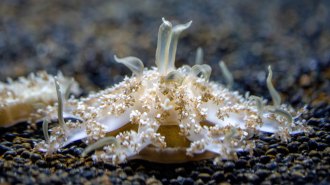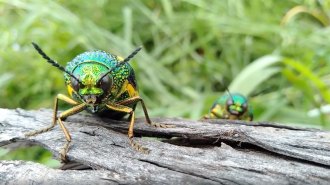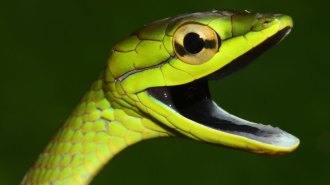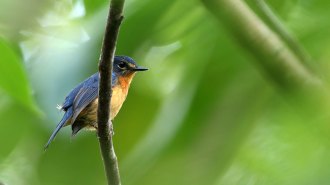Search Results for: Forests
Skip to resultsCan’t find what you’re looking for? Visit our FAQ page.
5,522 results for: Forests
-
 Animals
AnimalsJellyfish snot can sting swimmers who never touch the animal
Researchers have found mobile cellular blobs coated with stinging cells in mucus from a jellyfish that sits upside-down on the seafloor.
-
 Climate
ClimateHow scientists wrestle with grief over climate change
With climate change altering our world at an increasing pace, scientists who monitor and study nature are frustrated and grieving.
-
 Life
LifeSparkly exoskeletons may help camouflage beetles from predators
Iridescence, normally thought to help insects stand out, can also camouflage beetles from predators, according to new experimental evidence.
-
 Animals
AnimalsSnakes suffered after a frog-killing fungus wiped out their food
A frog-killing fungus that swept through Panama had a hidden effect. A new study finds that snake diversity declined post-fungus at one field station.
-
 Earth
EarthWildfires could flip parts of the Amazon from a carbon sponge to a source by 2050
Climate change and deforestation could double the area burned by fire in the southern Amazon by 2050, flipping the forest from carbon sponge to source.
-
 Archaeology
ArchaeologyAfter the Notre Dame fire, scientists get a glimpse of the cathedral’s origins
Researchers will tackle the scientific questions behind rebuilding Notre Dame, and learn more about its history.
-
 Life
LifeA ‘bonanza’ of new bird species was found on remote Indonesian islands
Bird discoveries typically come in a trickle. But in a remote corner of Southeast Asia, 10 newly described songbird species and subspecies were found.
By Jake Buehler -
 Climate
ClimateA new roadmap shows how the U.S. could be carbon-neutral by 2050
A new report charts a roadmap for the U.S. to have zero carbon footprint by 2050, but only with heavy and immediate investment in carbon removal technologies.
-

Scientists embrace a cathedral’s rebirth
Editor in Chief Nancy Shute discusses the science behind restoring Notre Dame's unique sound.
By Nancy Shute -
 Animals
AnimalsAustralian fires have incinerated the habitats of up to 100 threatened species
Hundreds of fires that are blazing across the continent’s southeast have created an unprecedented ecological disaster, scientists say.
-
 Life
Life‘PigeonBot’ is the first robot that can bend its wings like a real bird
Insights into the joint movements and feather surface structures that help birds control their wing shape could help robotic flyers move more deftly.
-
 Animals
AnimalsA year of big numbers startled the world into talking about nature
One million species are at risk. Three billion birds have been lost. Plus surges in Amazon burning.
By Susan Milius